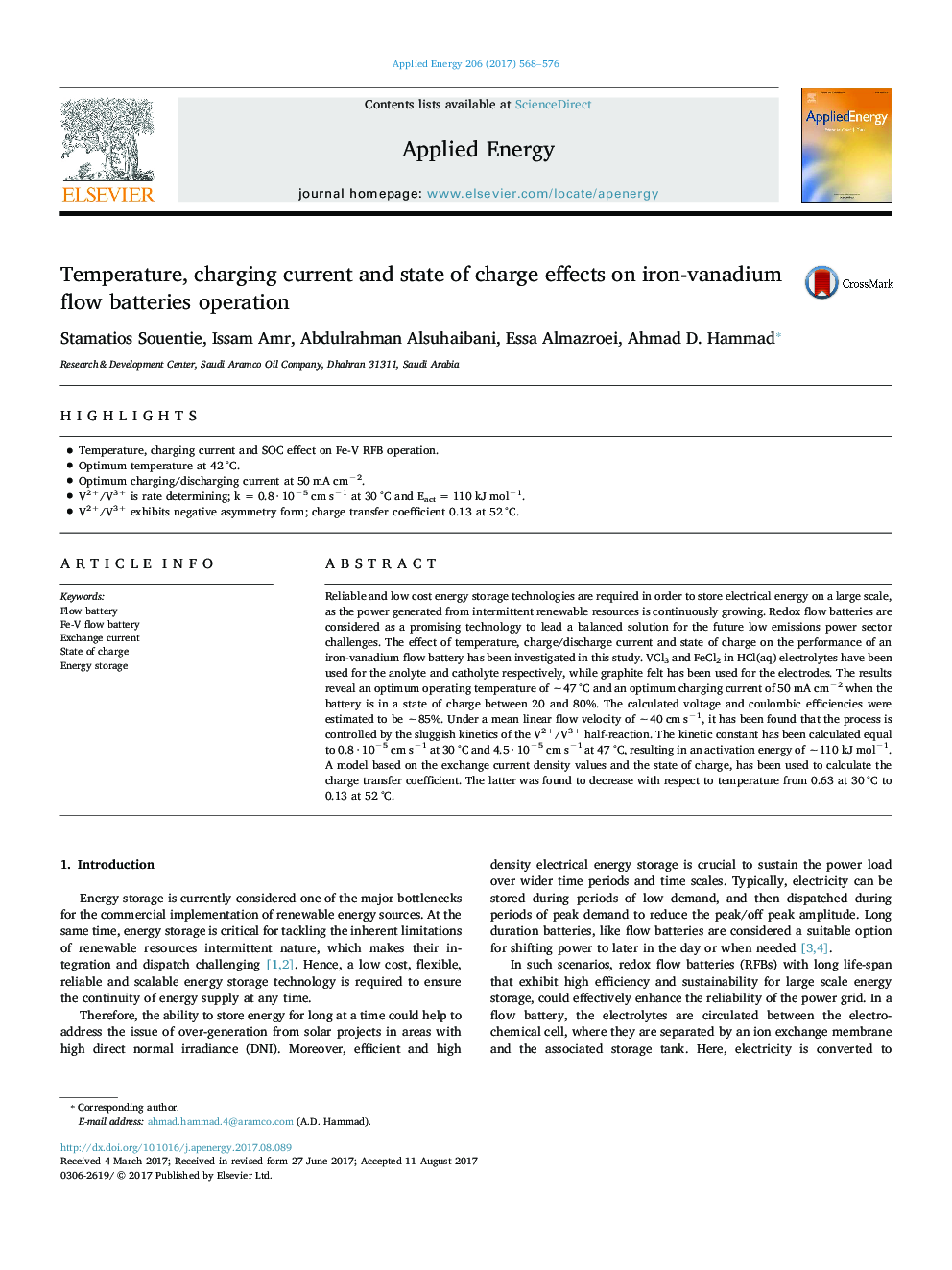| Article ID | Journal | Published Year | Pages | File Type |
|---|---|---|---|---|
| 4915702 | Applied Energy | 2017 | 9 Pages |
Abstract
Reliable and low cost energy storage technologies are required in order to store electrical energy on a large scale, as the power generated from intermittent renewable resources is continuously growing. Redox flow batteries are considered as a promising technology to lead a balanced solution for the future low emissions power sector challenges. The effect of temperature, charge/discharge current and state of charge on the performance of an iron-vanadium flow battery has been investigated in this study. VCl3 and FeCl2 in HCl(aq) electrolytes have been used for the anolyte and catholyte respectively, while graphite felt has been used for the electrodes. The results reveal an optimum operating temperature of â¼47 °C and an optimum charging current of 50 mA cmâ2 when the battery is in a state of charge between 20 and 80%. The calculated voltage and coulombic efficiencies were estimated to be â¼85%. Under a mean linear flow velocity of â¼40 cm sâ1, it has been found that the process is controlled by the sluggish kinetics of the V2+/V3+ half-reaction. The kinetic constant has been calculated equal to 0.8 · 10â5 cm sâ1 at 30 °C and 4.5 · 10â5 cm sâ1 at 47 °C, resulting in an activation energy of â¼110 kJ molâ1. A model based on the exchange current density values and the state of charge, has been used to calculate the charge transfer coefficient. The latter was found to decrease with respect to temperature from 0.63 at 30 °C to 0.13 at 52 °C.
Related Topics
Physical Sciences and Engineering
Energy
Energy Engineering and Power Technology
Authors
Stamatios Souentie, Issam Amr, Abdulrahman Alsuhaibani, Essa Almazroei, Ahmad D. Hammad,
